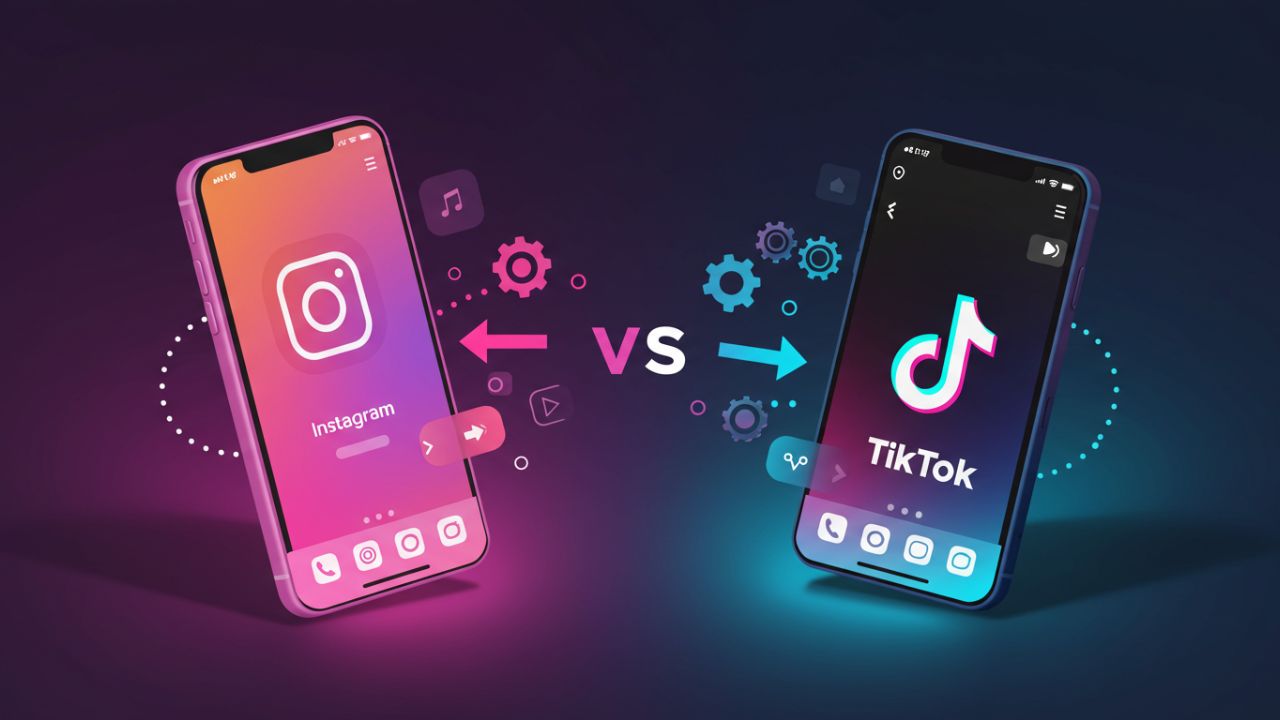Social media is no longer about choosing one platform over another—it’s about strategically integrating platforms to create a seamless content ecosystem that multiplies reach and engagement. Two of the most dynamic platforms today are Instagram and TikTok. While both are visual-centric and short-form video-driven, they cater to slightly different audiences and offer unique algorithms and features. When leveraged together, these platforms can exponentially expand your visibility and influence.
This comprehensive guide will walk you through everything you need to know to effectively integrate Instagram and TikTok for maximum impact.
Chapter 1: Understanding the Strengths of Each Platform
Instagram Strengths:
- Highly polished aesthetic
- Strong community and influencer network
- Robust shopping features
- Reels for short-form video
- Stories and Highlights for ongoing engagement
TikTok Strengths:
- Viral content potential
- Authenticity and spontaneity
- Powerful For You Page (FYP) algorithm
- Trend-driven discovery
- Creative editing tools and sound library
Understanding the different user expectations and strengths of each platform is the first step in creating an effective integration strategy.
Chapter 2: Cross-Promotion Tactics
- Repurpose Content:
- Turn a TikTok video into an Instagram Reel.
- Share Instagram Reels as TikToks by trimming or adapting the content.
- Ensure video formats (vertical 9:16) and durations are compatible.
- Use Similar Usernames and Branding:
- Maintain consistent handles, profile pictures, and bios.
- Use Linktree or similar tools to link both platforms from your bio.
- Tease Content Between Platforms:
- Post a snippet on TikTok and direct viewers to Instagram for the full story.
- Create cliffhangers or “part 2 on TikTok/Instagram” series.
- Leverage Hashtags and Trends:
- Use trending TikTok sounds and hashtags on Instagram Reels.
- Translate Instagram hashtags into TikTok-friendly language.
Chapter 3: Content Strategy for Dual Platforms
| Content Type | TikTok | |
|---|---|---|
| Behind-the-Scenes | Stories / Carousel | Raw video format |
| Educational Content | Carousels / Reels | Voice-over explainer videos |
| Product Demonstrations | Polished Reels / IGTV | Trend-driven challenges / tutorials |
| Influencer Collaborations | Sponsored Posts / Lives | Duets / Stitch / Sponsored TikToks |
| User-Generated Content | Highlights / Tags | Challenges / Reactions |
- Plan campaigns that start on one platform and end on the other.
- Track content performance on each and adjust future posts accordingly.
Chapter 4: Tools and Apps for Easy Integration
Scheduling and Analytics:
- Later, Hootsuite, Buffer (for scheduling on both platforms)
- Metricool and Iconosquare (Instagram-focused)
- TikTok Business Analytics
Editing and Formatting:
- CapCut (perfect for both platforms)
- InShot
- Canva (resize templates for TikTok and Instagram)
Link Management:
- Linktree, Beacons, Milkshake (bio link tools)
Chapter 5: Collaborations and Community Growth
- Cross-Platform Giveaways: Ask users to follow you on both platforms to enter.
- Influencer Co-Creation: Work with influencers who are active on both platforms to co-promote.
- Live Sessions and Q&As: Host dual events and promote them on each platform.
Chapter 6: Algorithms and Timing
- TikTok: Prioritizes video completion, engagement, and trending sounds.
- Instagram: Considers engagement history, timeliness, and post type.
Posting Times:
- TikTok: Best times are early morning and evening (especially weekends)
- Instagram: Late morning to mid-afternoon, depending on your audience
Strategy Tip: Use TikTok to test content ideas. If something goes viral, adapt it for Instagram.
Chapter 7: Analytics and Measurement
Track:
- Engagement Rate (likes + comments + shares / followers)
- Reach and Impressions
- Follower Growth Rate
- Conversion (e.g., clicks to bio, purchases)
Tools:
- TikTok Business Analytics Dashboard
- Instagram Insights
- Google Analytics (for links and conversions)
Chapter 8: Common Pitfalls and How to Avoid Them
- Copy-Paste Syndrome: Posting identical content with no platform-specific optimization.
- Neglecting Engagement: Not responding to comments or DMs.
- Overlooking Trends: Trends evolve rapidly—stay current.
- Burnout: Trying to keep up with both platforms without a schedule.
Conclusion
Instagram and TikTok aren’t rivals—they’re complementary tools in your social media arsenal. By building a smart content strategy, synchronizing your branding, and understanding how each platform works, you can dramatically increase your reach and grow your audience.
Whether you’re a brand, influencer, or content creator, the integration of Instagram and TikTok is not just recommended—it’s essential for digital success in 2025 and beyond.

Leave a Reply